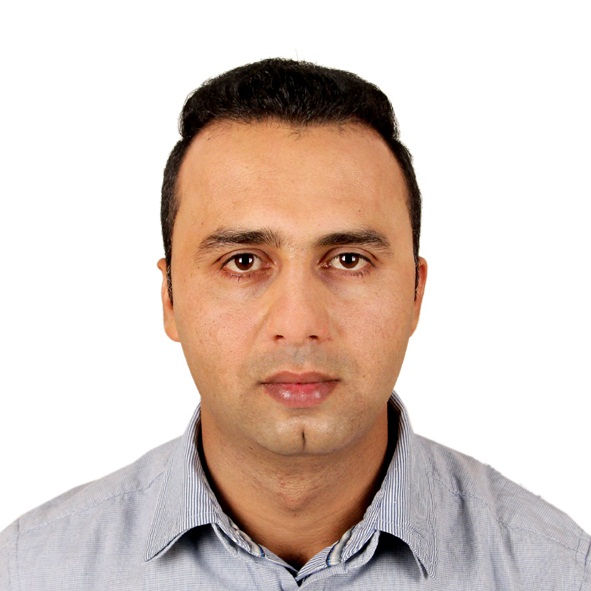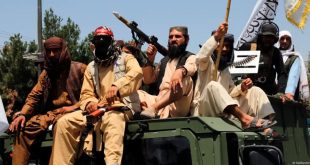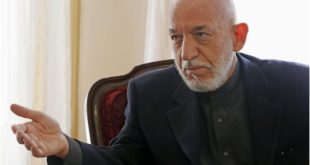By Abdul Saboor Sarir: On July 31, 2015, the Taliban announced on their website the death of their one-eyed, reclusive leader Mullah Omar. His actual death preceded the announcement of his death by over two years. The delay in declaring his death is understood as resulting from the need to preserve the cohesiveness of the group, while the seemingly impromptu declaration is said to have stemmed from splits between the different factions within the Taliban.
Just as his life after 2001, when he chose to gradually retreat into the shadows, the circumstances of his death remain shrouded in mystery. Was it ill health that truncated his life? Or, was his death a result of deliberate machination of his patrons in Pakistan who realized that he had outlived his utility for their purposes? Both these theories warrant scrutiny, though the recent history of the relationship between Taliban leadership and the Pakistani government provides a fateful precedent.
In 2005-06, Mullah Omar appointed Mullah Baradar and Mullah Obaidullah as his deputies and potential successors. But, the tenure of both the leaders was curtailed by the Directorate for Inter-Services Intelligence (ISI) of Pakistan. In 2007, the Pakistani security forces arrested Mullah Obaidullah, who died, mysteriously, in a prison in Karachi in 2010. The parallel with Omar’s death is ominous; Obaidullah’s death was announced by the Pakistani authorities only in 2012, two years after he had died. When Mullah Baradar met representatives of the Afghan government in 2010 without consulting with the ISI, he was swiftly arrested, exposed and politically undermined within the Taliban. The ISI followed this by making a spate of arrests of the Taliban leaders based in Pakistan. The Afghan government officials, despite repeated attempts to meet with Mullah Baradar to get peace talks back on the rails, were only allowed to see him in 2013, when he was reported as sedated and unable to speak.
If the experiences of Baradar and Obaidullah’s sound like ominous portends, it is because they indeed are. In killing Mullah Omar, the Pakistani ISI effectively removed a leader who was unwilling to pursue peace talks on terms dictated solely by Pakistan, and, who was, despite all his shortcomings, the only unifying figure for the group. The ISI orchestrated Mullah Omar’s rise in the late 1990s when Gulbuddin Hekmatyar failed to deliver for them. They kept him alive and provided him a sanctuary for as long as he served their agenda. The ISI finally killed him when he refused to toe their line and when they found an alternative in Mansoor. The selection of Sirajuddin Haqqani as a deputy to Mullah Akhtar Mansoor also indicates a stronger hold of Pakistan on the Taliban.
In the coming days, we are likely to savor a spate of commentary and analyses on the death of Mullah Omar and the fragmentation within Taliban’s leadership. We may argue whether deaths of insurgent leaders who shot to prominence with their cry of religion and simultaneous endorsement of terrorism give us a cause for celebration or a reason for skepticism. Perhaps, we may also debate the importance of Qatar versus Murree, Peshawar versus Quetta, and Mansoor versus Zakir.
These debates are important in their own light, but the conversation that merits attention now is the one that pertains to Afghanistan’s sovereignty as a nation state. It is about a nation longing to resurrect its identity and take ownership over its destiny, but is held hostage to the parochial interests of its neighbor. This is as much a conversation about the State of Pakistan that provides sanctuary, finances and training to insurgents and terrorists of all color and creed; that talks peace while hemorrhaging efforts towards peace; and that claims to be an ally of the West and a victim of terrorism, but that, in fact, continues to be the source of every major terrorist attack against the West after September 2001.
Since the ‘war on terrorism’ began in 2001, Pakistan has played host to Osama Bin Laden (who was killed in 2011, much to Pakistan’s chagrin), Ayman Zawahiri (still at large), Khaled Sheikh Mohammad (who was captured in 2003) and several senior Al-Qaeda leaders. This, despite Pakistan’s insistence that it had no knowledge of the whereabouts of these leaders, is not as staggering as the state of denial that the international community remains in about Pakistan’s intentions. Pakistan maintains its control over the Al-Qaeda leaders as well as the leadership of the Taliban. It strategically identifies those terrorists that it wants to host and cultivate as its assets and those who can be dispensed with. Hafeez Saeed, the infamous leader of Lashkar-e-Taiba – now, Jamat-ud-Dawah – has long benefited from direct active support from the ISI. Held responsible for engineering several terrorist attacks against India and despite having a large bounty on his head, he moves around freely in Pakistan participating in funeral prayers, including one in absentia for Mullah Omar, and public sermons. This charade has persisted for 14 years. The revelation that Mullah Omar “died” in Karachi, not in a desolate village in Afghanistan, nor in the inaccessible tribal areas between Afghanistan and Pakistan, should not surprise anyone. But, it should dismay everyone who believes that the politics of hatred and terrorism as a manifestation of foreign policy is a relic of the past. And it should propel a conversation about the nature of the international community’s relations with a state that does not flinch in its support for terrorism and terrorist groups and yet continues to advertise its helplessness against the same groups that it harbors.
We cannot allow the courage and enthusiasm shown by Afghans towards their democratic experiment in the last 14 years to sink under a conspiracy from Pakistan that continues to maintain the fiction of a peacemaker. This is an opportunity for the West to rally to the defense of the future of Afghanistan and prevent it from the stratagem of Pakistan whose enthusiasm to scuttle democratic progress of its neighbor and its duplicity knows no bounds.
 Afghanistan Times
Afghanistan Times




